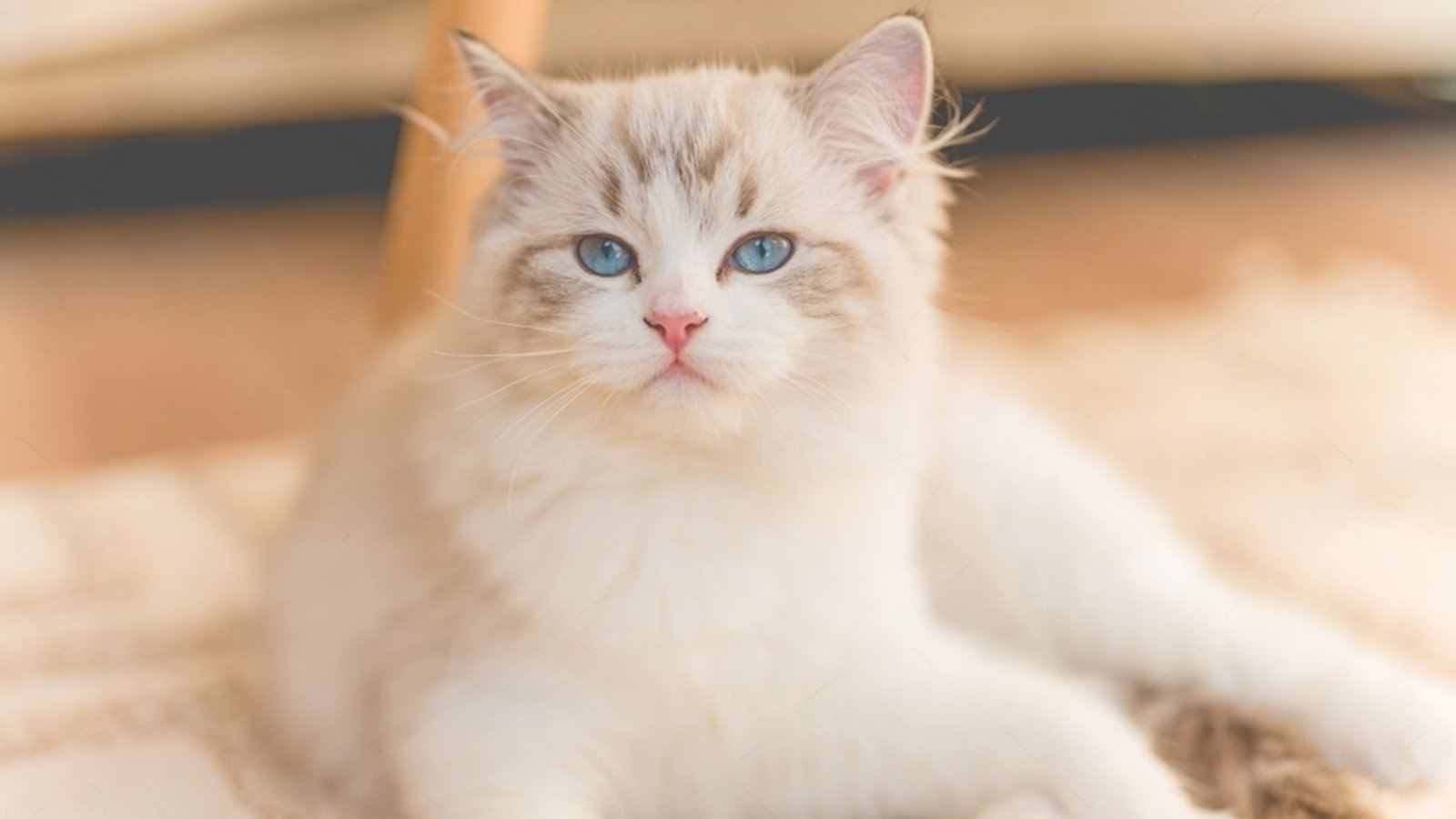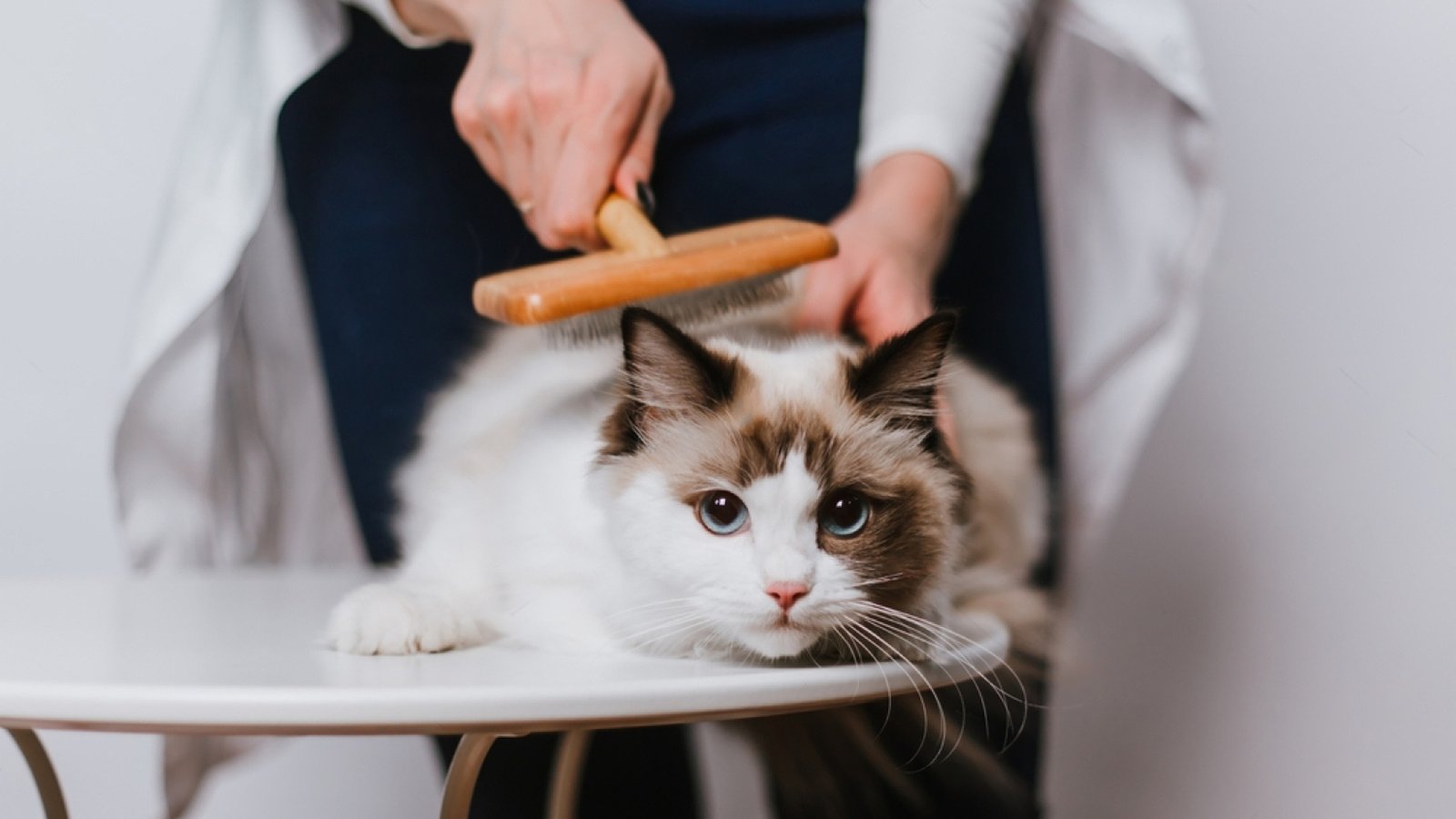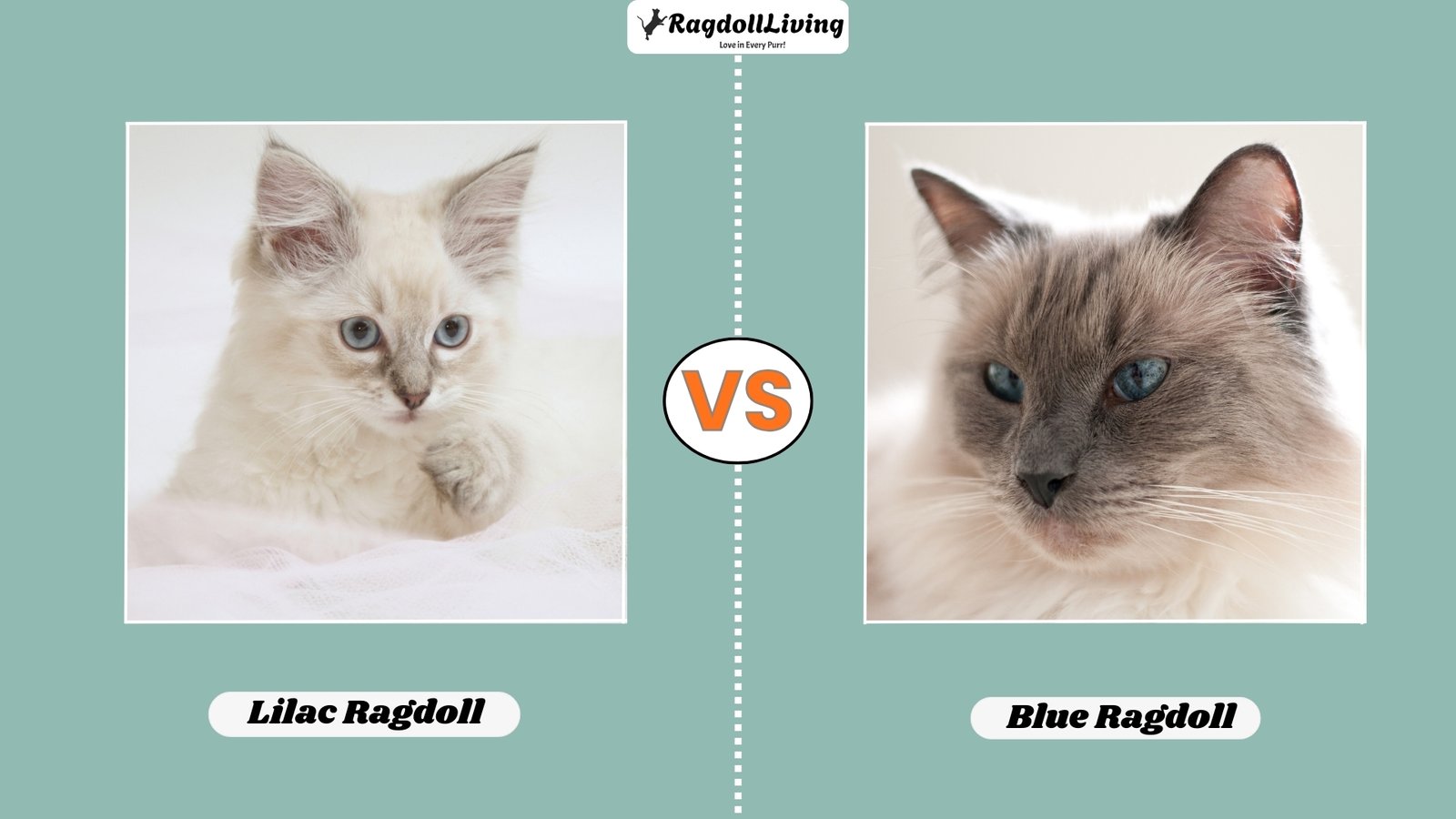Ragdoll ears reminiscent of eyes, coat, and skin need some care to stay hygienic and sterile. Although ragdoll cats are good self-groomers, looking over inside the ear once a week is a fair practice.
If there is no debris buildup or inflammation you’re good to go and don’t have to clean them though. If you notice a foul odor, redness around the ear, or undue wax accumulation, you do need to visit your veterinarian straight away to figure out the cause and get the best treatment possible.
Keep hovering for a full rundown of Ragdoll cat ear care and when & how to clean them up at home.
Understanding Ragdoll Cat Ears Anatomy
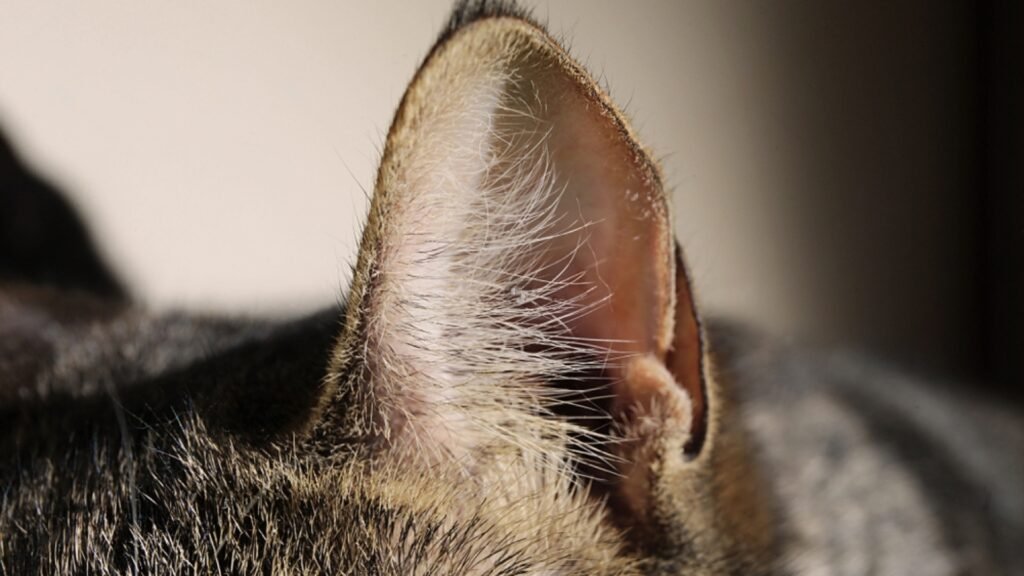
Your ragdoll cat ear consists of three parts; the outer ear, the middle ear, and the inner ear.
The Outer Ear
The outer ear or earflap of your ragdoll Is mainly the part you see. Ragdoll ears don’t stand up but rather have a slight onward tilt. Inside the earflap is an ear canal that is wide and open, and you could see a lot of hair coming out of it. This part of your Ragdoll’s ear is more likely to undergo problems if not correctly cared for. It leads to the middle ear right to the eardrum.
The Middle Ear
The middle ear sits past the outer ear and has a small, air-filled room with three tiny bones (hammer, anvil, stirrup) behind the eardrum. These bones guard the cavity, name bulla, and help with ragdoll hearing. It further connects to the throat Eustachian tube that regulates air pressure.
The Inner Ear
The inner ear is where things get much more complex and incredibly sensitive. The inner ear contains the cochlea (organ of hearing) which is liable for turning vibration into nerve impulses that travel to the brain. These nerve impulses are rightly coupled with the brain and help with hearing and balance since the inner ear also has a vestibular system (organ of balance).
Signs Of Ear Problems In Ragdoll Cats
As a larger domestic cat breed, ragdolls are healthy in general, and most of them do just fine when it comes to ear health. For the most part, they’re not prone to specific ear-related issues though in rare cases, these indoor-only floppy cats could get affected by ear infections and show you certain signs that you ought to watch out for.
Ear Scratching
Naturally, cats do scratch their ears sometimes and so do ragdolls. If it gets persistent and your Ragdoll cat scratches its ears over and over again, it might be a problem that needs ear cleaning or vet treatment. Excessive scratching leads to tearing at the edges of the ears, wounds, light bleeding, recurring head shaking, or loss of fur around the ears. These signs clearly indicate ear discomfort that needs addressing.
Discharge Or Wax Buildup
Healthy Ragdoll ears should be pink on the insides and free from excessive debris. A little bit of wax is normal, but if you notice a dark, gooey buildup or any discharge along with a nasty odor, it could be a sign of infection or ear mites.
Infection
Ear infections in Ragdolls can be driven by various factors, including bacteria, yeast, or even allergies. Signs of an ear infection include inside redness (ears look red instead of pink), swelling, bumps, the noticeable odor coming out from the ears, or yellowish or greenish discharge that leaks out of the ear.
How Often Should You Clean Your Ragdoll Ears?
Cleaning isn’t always a routine part of Ragdoll cat ear care. We already mentioned it’s best to look over your kitten’s ears at least once a week when you groom them to detect any issues early on. Actual ear cleaning however only necessary if you catch signs of ear problems like wax buildup, debris, ear mites infestation, or any ones we’ve written above.
If you notice your ragdoll is suffering from ear mites or any sort of ear infection your veterinarian most likely recommends you to do ear cleaning before applying any medicated ear cleaner. This helps remove as much wax and discharge buildup as possible and gives room for medicated drops to work properly.
Supplies For Cleaning Ragdoll Ears
Once you’ve decided to clean your Ragdoll ears, gather the necessary supplies and have them handy. These are;
- Cat-ear cleaning solution recommended by your vet
- Soft cotton pads or balls
- A clean dry towel or blanket to wrap your Ragdoll in
- Treats for positive reinforcement
- A helper (if your cat is wiggly or new to ear cleaning)
Never use Q-tips or cotton swabs since this could push the wax build even down into the ear. Along with it, don’t use hydrogen peroxide or rubbing alcohol. They even can irritate the delicate skin inside your ragdoll’s ears.
Step-by-Step Guide to Cleaning Ragdoll Cat Ears
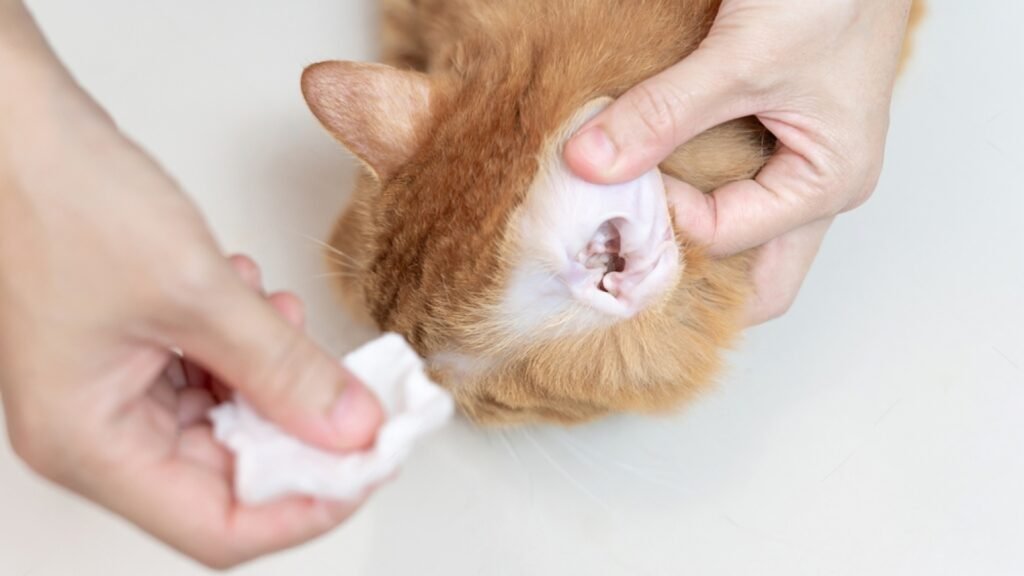
Ragdoll cats don’t like to travel, whether by car or by airplane, are stressed out with occasional bathing, and likewise dislike having their ears cleaned. You can clean their ears on your own or if possible, with a helper. Follow the steps we’ve prepared to make the process pretty much less stressful and more effective.
Gently Hold Your Cat in Place
Sit in a comfortable position and and place your Ragdoll on your lap. If they’re fidgety, which btw, they are, swaddle them in a towel to keep their body and paws restrained. This could calm your cat down and help you to grasp them firmly.
Calm Your Cat
Before you begin, take a moment to speak softly and pet your Ragdoll. They’re way easygoing, placid, and friendly compared to other breeds so positive interaction reduces any jitters they might have. If your Ragdoll seems clumsy make them up for it by maintaining a calm demeanor throughout the ear cleaning process.
Apply The Cleaning Solution
Now, grasp the ear flap and gently pull back it with one hand to expose the inner ear. With your other hand, squeeze a few drops of the ear cleaning solution inside, either directly from the bottle or using a saturated cotton ball.
If some solution spills out the ear, don’t worry as you can wipe it off afterward though. Avoid touching the tip of the bottle to your Ragdoll’s outer ear. If you do unintentionally touch it, wipe the tip off with a cotton ball soaked in alcohol to prevent contamination.
Massage The Base of The Ear
Continue holding the ear flap (pinna), and massage the base of the ear for around 30 seconds to help the solution work its way down. You should hear a squishy sound as you massage because the solution is breaking up and loosening any wax buildup or debris.
Wipe off excess solution
Use a clean cotton ball or soft cloth to gently wipe the visible wax or debris. Be careful not to push anything too deep into the ear canal.
Let Your Cat Shake Their Head
Let your ragdoll shake her head to dislodge the liquid and debris from deep within the ear canal. Once again, clear off discharge or debris that comes out using a cotton ball. Make sure to go only as deep as you can see.
Praise Your Cat & Offer Treat
The process could potentially stress your ragdoll out. It’s better to end the ear cleaning session with treats and plenty of praise as positive reinforcement.
Ragdoll Cat Ear Care FAQs
Are Ragdoll cats prone to ear infections?
Despite being primarily an indoor-only cat breed, Ragdolls can get dirty ears if not properly groomed. They’re not particularly prone to ear infections, though you should check their ears at least once a week for signs like wax accumulation, redness, or discharge.
Can I use cotton swabs to clean my Ragdoll’s ears?
During infection, there isn’t anything worse than using a cotton swab or Q-tip to clean your Ragdoll cat ears. Doing so can actually push the wax buildup deeper into the ear canal and spread the infection. Instead of cotton swabs use vet-approved ear cleaning solution and cotton balls to wipe off debris safely.
What should I do if my Ragdoll cat is resistant to having their ears cleaned?
On the off chance, ragdoll cats can be sensitive to having their ears touched or cleaned. In this scenario, you can try squeezing the ear cleaner solution by using a saturated cotton ball soaked in the solution instead of pouring it straight from the bottle. If your ragdoll still fends off you can get professional help.
Wrapping Up…
Ragdolls are generally good at keeping themselves clean, whether it’s their coat, paws, or even ears. Turns out, you don’t have to clean their ears as long as your kitty isn’t suffering from any ear infections. However, what you need to do when it comes to ragdoll cat care is to do weekly ear inspections and look out for signs like head shaking, scratching the ears, wax buildup, or discharge. If you notice anything unusual, consult with the veterinarian you trust most and follow the steps mentioned in this guide to safely clean your Ragdoll’s ears at home. Hopefully, our ragdoll cat ear care guide lets you care for your cat’s ears and makes the cleaning process easier.
Written By: Usman Malik | Reviewed By: Ali Abbas | Fact Checked By: Aqib Zulfiqar



